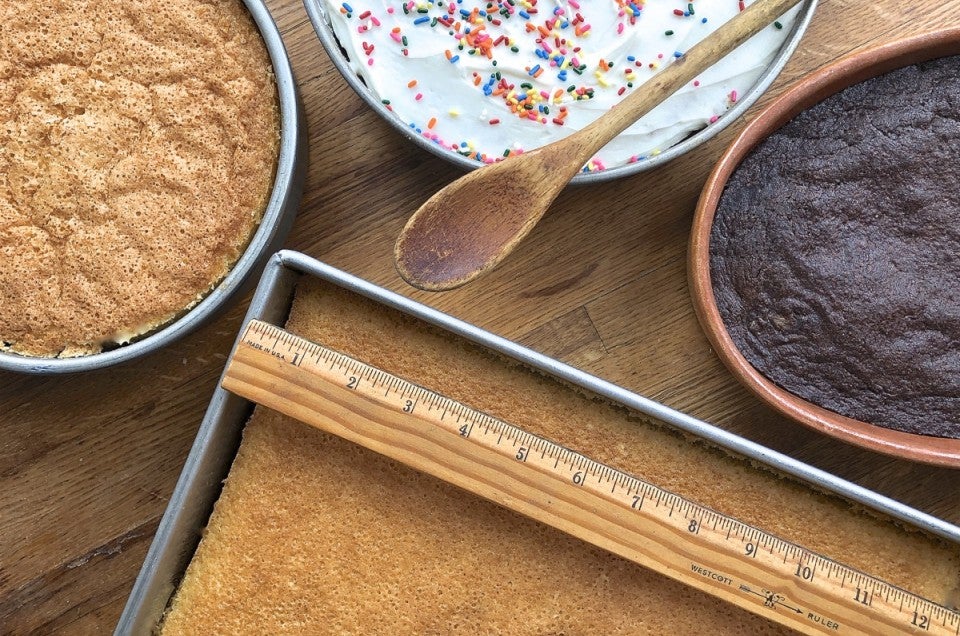


Despite the multitude of baking pans in your kitchen, at some point you’ll run across a recipe calling for a pan you don’t have. Like, your grandma’s recipe for apple cake specifies an 11” x 7” pan — really? You can choose a different recipe or go online to buy the specified pan. But honestly, the answer’s probably already in your cupboard; you simply have to know the most common alternative baking pan sizes.
I know you value your time, so let’s keep this post concise: I’ll focus on cake and brownie/bar recipes and their corresponding pans. In the future I’ll survey alternative baking pan sizes for yeast loaves and rolls. But for now: cakes and bars.
Google “alternative baking pan sizes” online and you’ll find charts listing volumes of everything from a 6” round cake pan to an 8” x 4” x 2 1/2” loaf pan. But volume isn’t a huge help: it forces you to make the recipe first so you can measure its batter; and only then can you decide if you have an appropriate pan.
So I’m going to make things simple for you: assuming you own the most common cake and bar pans, I’ll show you how to make just about any recipe fit what you already have — (almost) no volume measurements necessary.
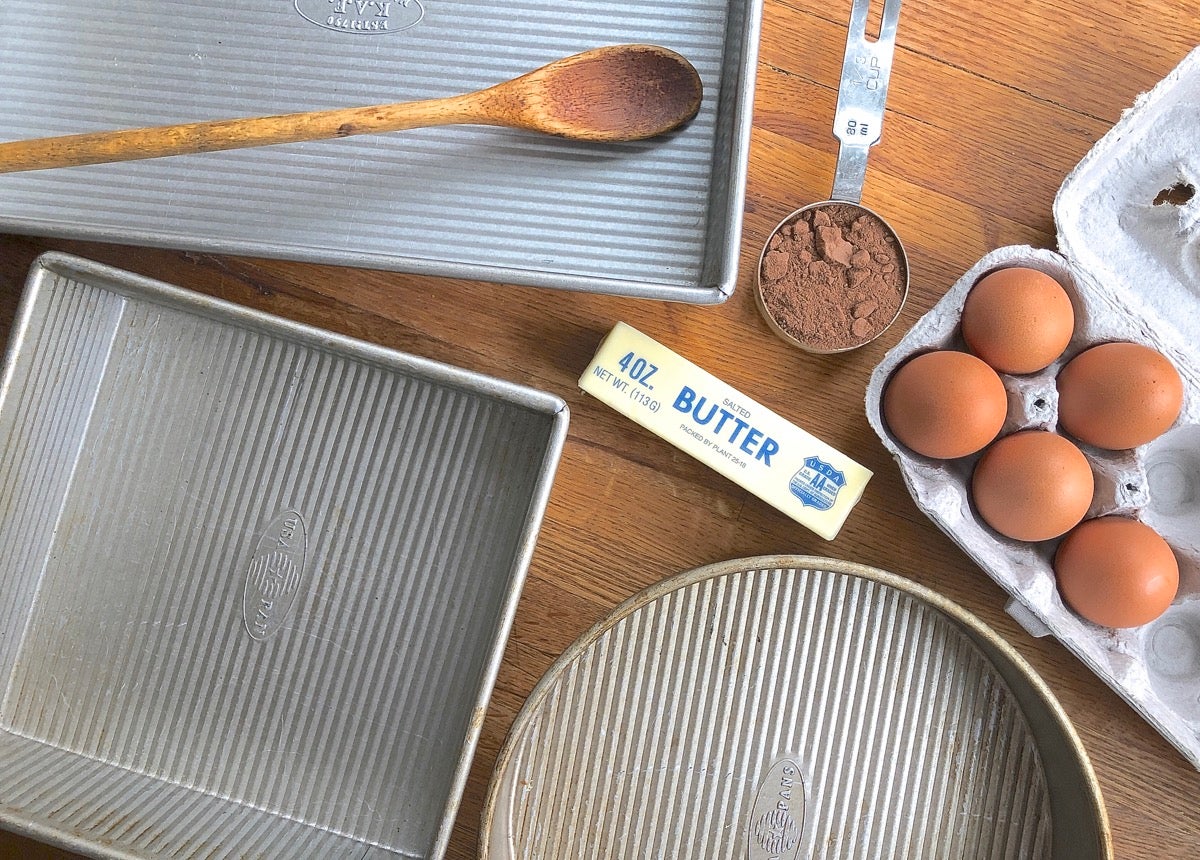
If you’re like most dedicated bakers, you own the following cake and bar pans:
These pans should cover just about any cake or brownie/bar recipe you run across. The challenge for most of us crops up when you have, say, an 8” square pan for brownies, but not a 9”. Or your cake recipe calls for a 9” x 13” pan, but you’d rather use round layer cake pans. What do you do then?
Figure out an alternative using some simple math.
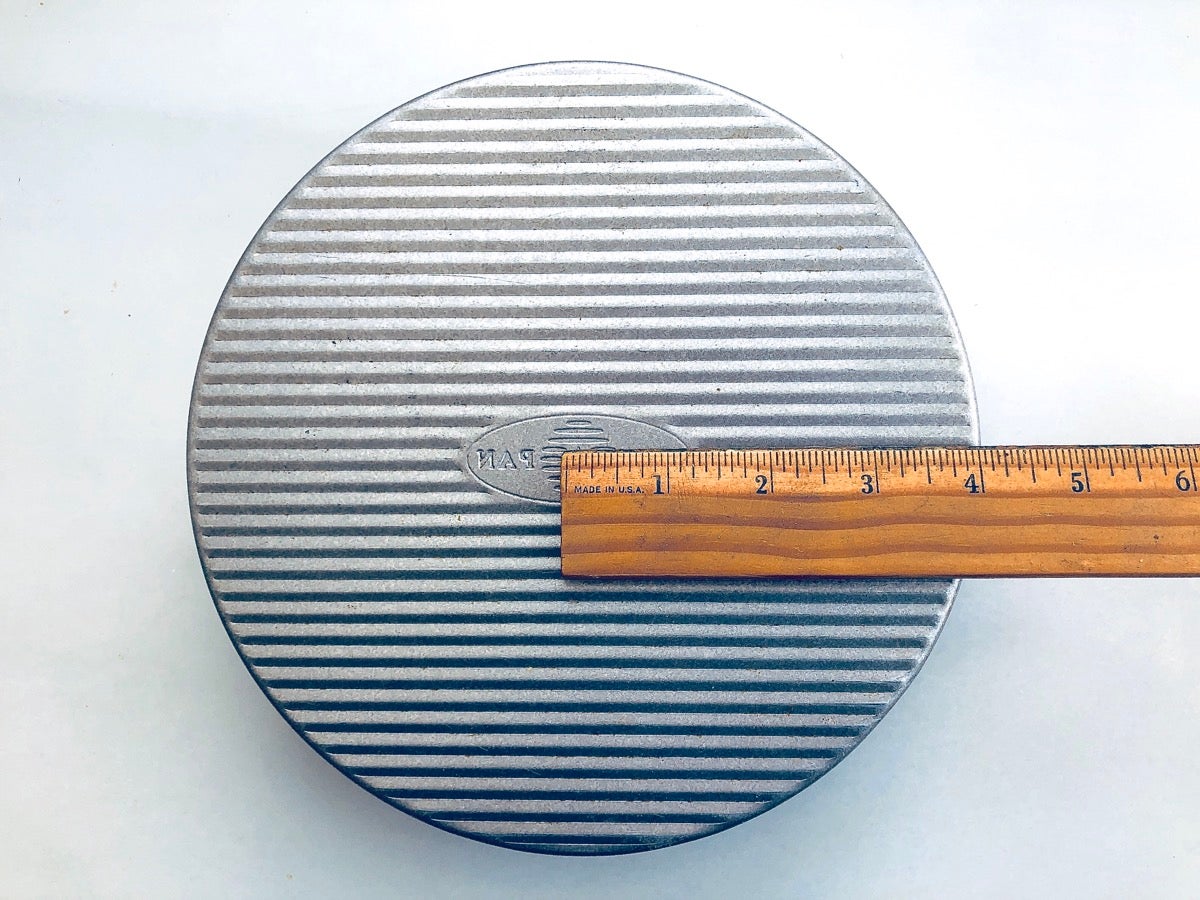
What’s the baking area (capacity) of an 8” square pan? Multiply one side by the other — 8” x 8” — to get 64”. Easy, right? Ditto any other square or rectangular pan. 10” x 10” = 100”, 11” x 7” = 77”, etc.
To figure the capacity of a round pan, you’ll need to recall a bit of geometry: the radius (half the diameter) of the pan, squared (multiplied by itself), times pi (3.14). So the area of that 9” round pan? 4.5 (radius) x 4.5 (radius) x 3.14 (pi) = 63.6, which we’ll round to 64”.
Wary of geometry? Use this easy calculating tool.
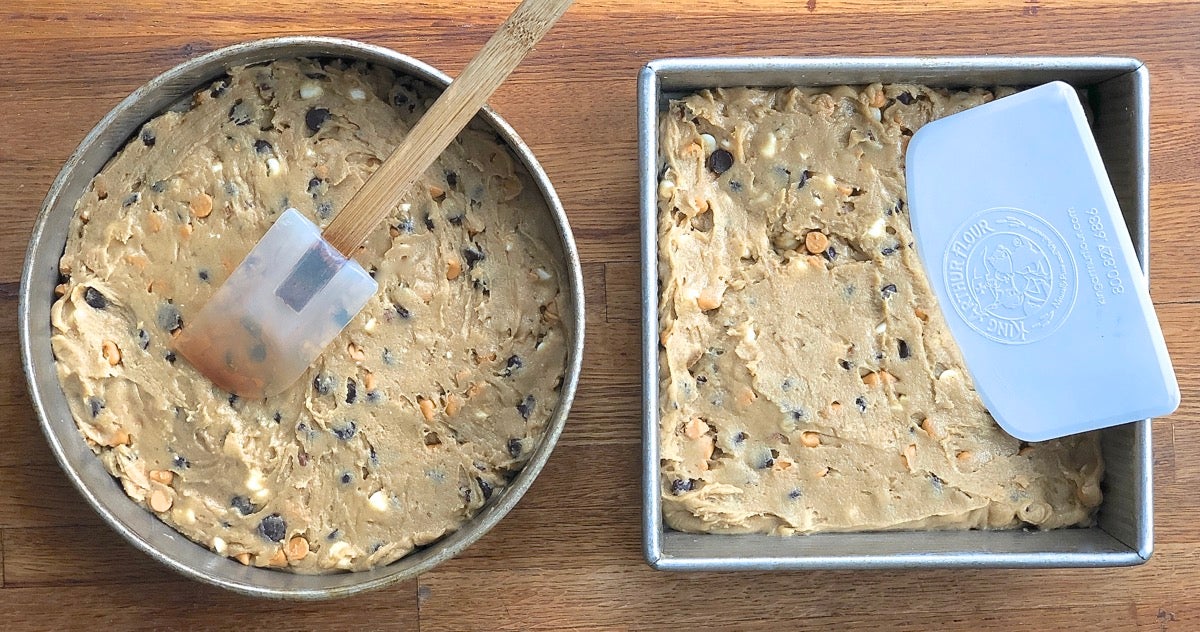
Bingo! You’ve just seen the easiest, most basic pan substitution: the capacity of an 8” square pan and 9” round pan are the same (64”) and the pans can be substituted for one another in any recipe.
Note: Figuring pan alternatives this way assumes a pan depth of 2”. You may be able to shuffle bar recipes among shallower pans, since most bars don’t rise ultra-high. But to switch a cake recipe from a 9” x 13” pan to, say, two 8” round pans, you really need the vertical wiggle room provided by a 2”-deep pan.
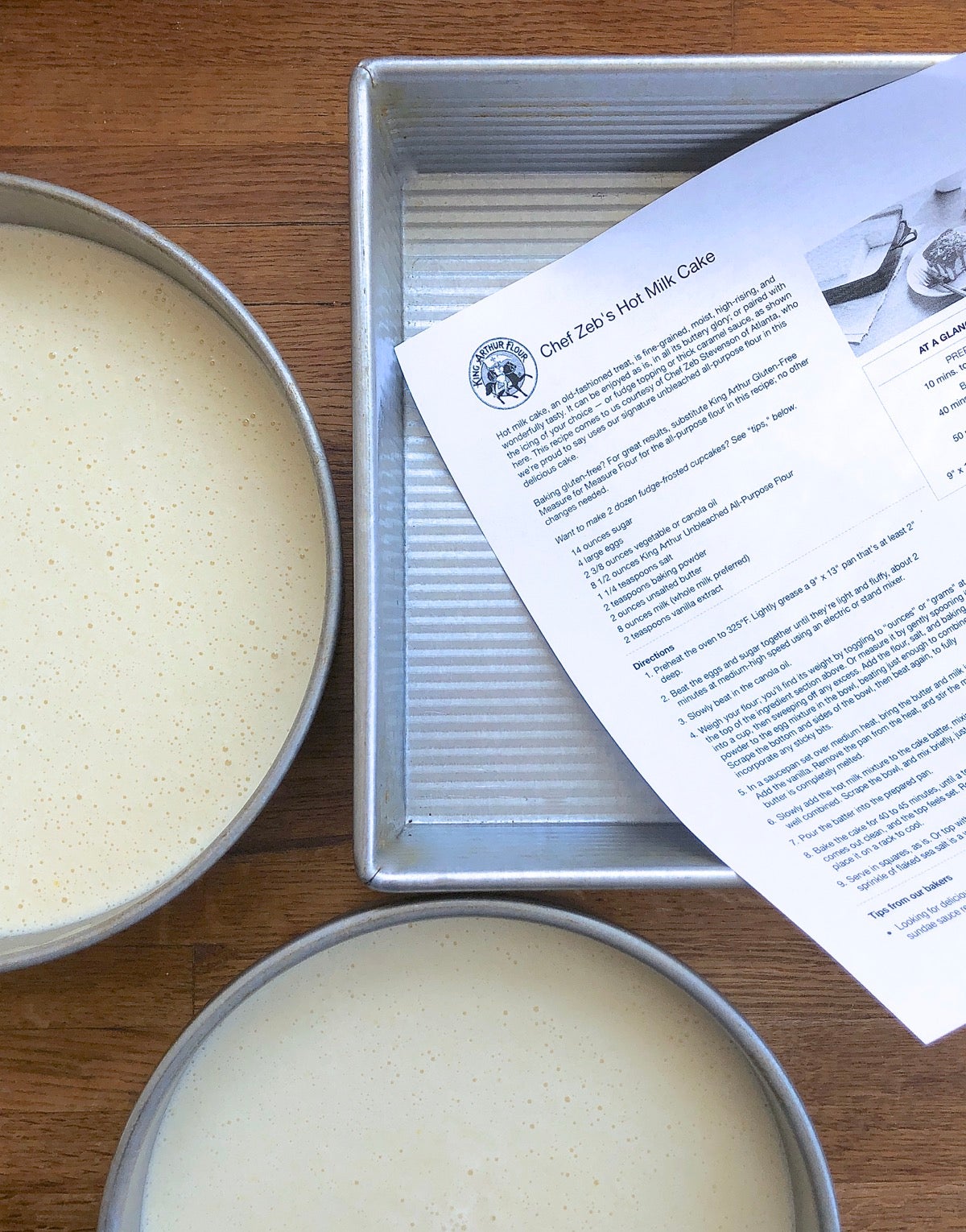
Now let’s throw your 9” x 13” pan into the mix. Multiply 9” x 13” to get 117”. What’s the best way to turn that 9” x 13” sheet cake recipe into two rounds for a layer cake?
Remember, your 9” round pan’s capacity is 64”. Your 8” round pan’s, 50”. Divide 117” by 2 and you get 58.5” — which falls right in between the two round sizes. So which round pans should you choose?
The two 9” round pans offer about 10% more space than the 9” x 13”. The two 8” rounds fall about 9% short. Bake in two 9” pans, you’ll get shorter layers than the cake you’d bake in a 9” x 13” pan. But choose two 8” pans and you run the risk of batter overflowing.
If it’s a new recipe, play it safe and bake in two 9” round pans.
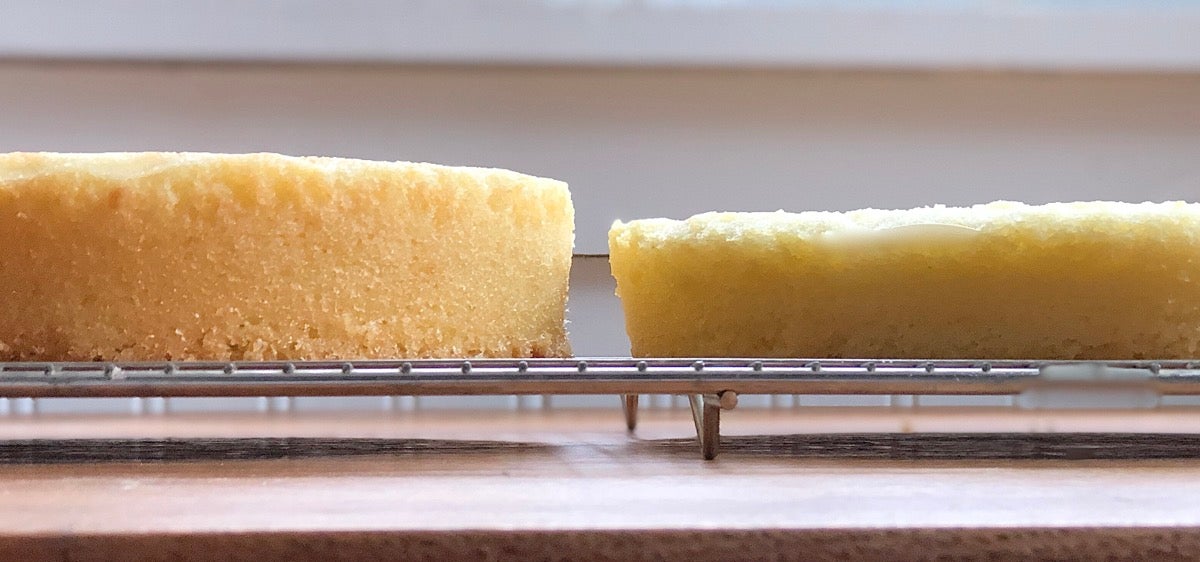
But if you’re familiar with the recipe, envision how high it rises in the 9” x 13” pan. Does it crown substantially over the rim of the pan — or does its top surface hover somewhere right at or below the rim?
If it’s a high-riser, your wise choice will definitely be 9” round pans. But if it looks a bit skimpy in the 9” x 13” pan, go ahead and try it in your 8” round pans; so long as they’re 2” deep (yes, measure them to be sure), you should be fine.
One more possibility: If you have both 8” round (50”) and 9” round (64”) pans, make a pretty tiered layer cake by dividing the batter between them, using about 25% more batter in the 9” pan than in the 8” pan. Bake, stack, and decorate!

Now, what about that brownie or cake recipe that calls for a 9” square pan — which you don’t have? (Anecdotal information — i.e., I asked my friends — tells me that more people have an 8" square than 9" square pan.)
First of all, if you don’t mind tweaking the recipe a bit you can increase all of the ingredients by 50% and bake it in a 9” x 13” pan (which is about 45% larger than a 9” square pan; increasing the recipe by 50% is easy, and close enough).
But if you want to follow the recipe as is, here are your choices:
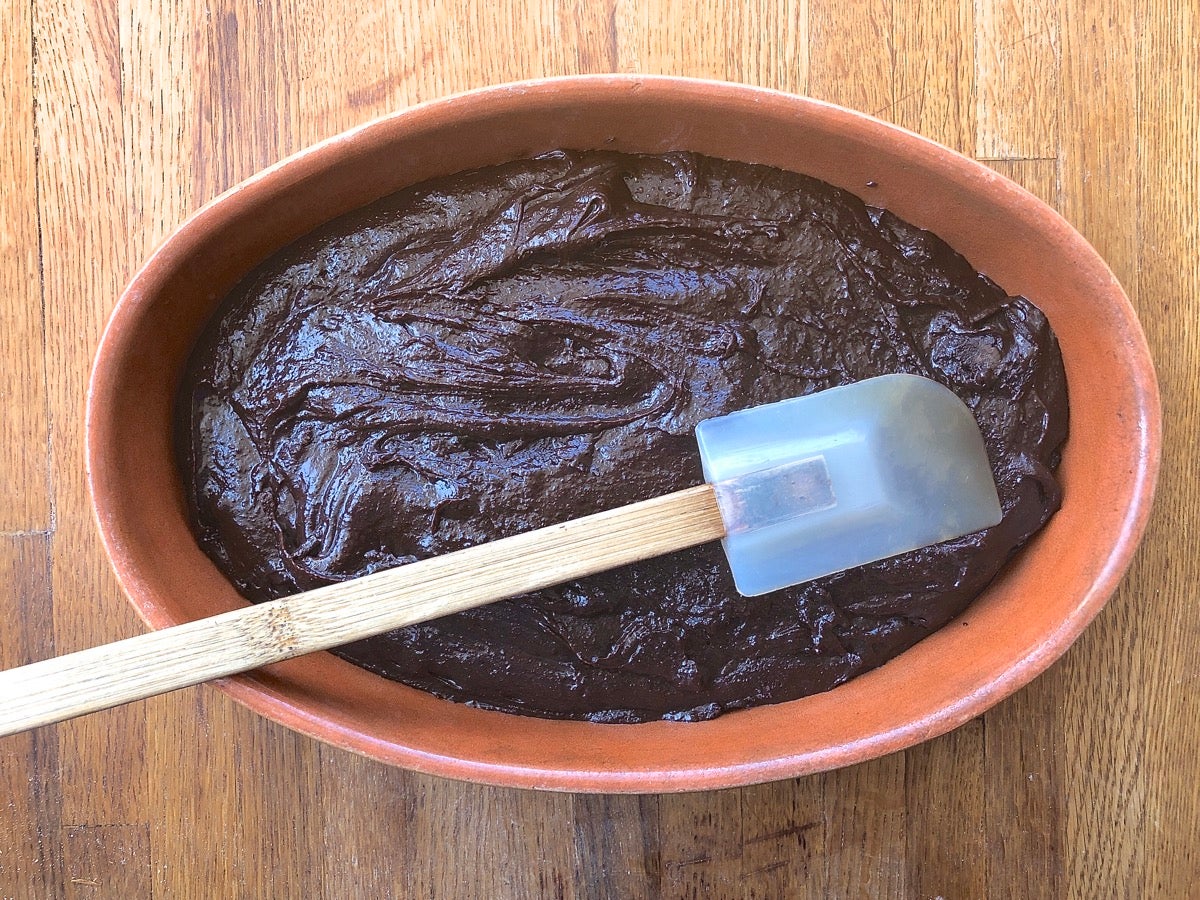
So long as you don’t mind their shape, oval casserole dishes can often step in for your regular baking pans. How do you figure the area of an oval, though? Back to that high school geometry:
Mark the very center of the casserole dish. Measure from the center to the top; in the case of an 8” x 12” oval pan, it’s 4”. Then measure from the center to one side: 6”. Now multiply 4” x 6” x 3.14 (pi), and you find that the area of your oval casserole is 75”. At only 8% less than the area of a 9” square pan, this is a worthy substitute.
Since most casserole pans are stoneware or glass (rather than metal) you might need to bake your bars or cake slightly longer, potentially at a lower temperature. For more information, read our post comparing glass, metal, and stoneware pans.
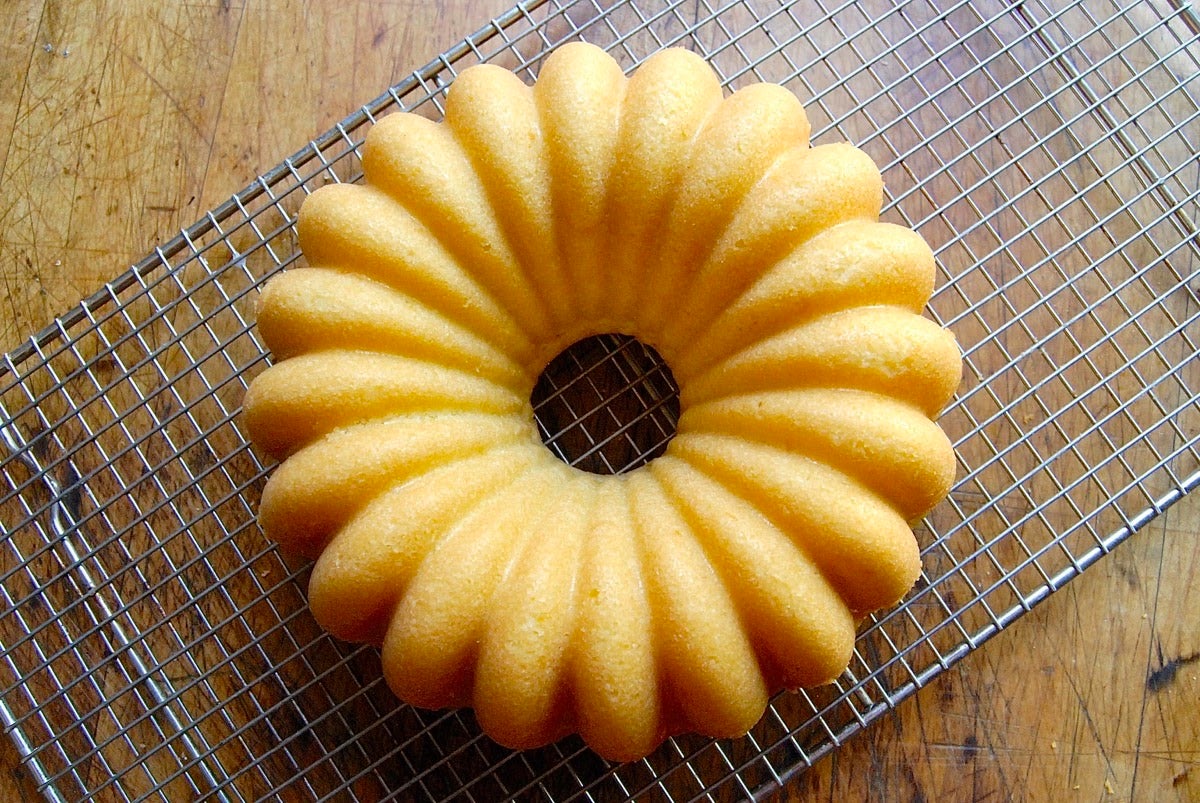
Now, to figure the capacity of a Bundt pan, you measure… forget it. You didn’t really think I was going to provide you with some complicated mathematical formula, did you? Nah, this is a case where volume is actually the best way to transition among pans.
A typical 9” to 10” Bundt pan will usually list a capacity of 10 cups. But this is “fill to the brim” capacity; baking capacity is actually much less, about 6 cups.
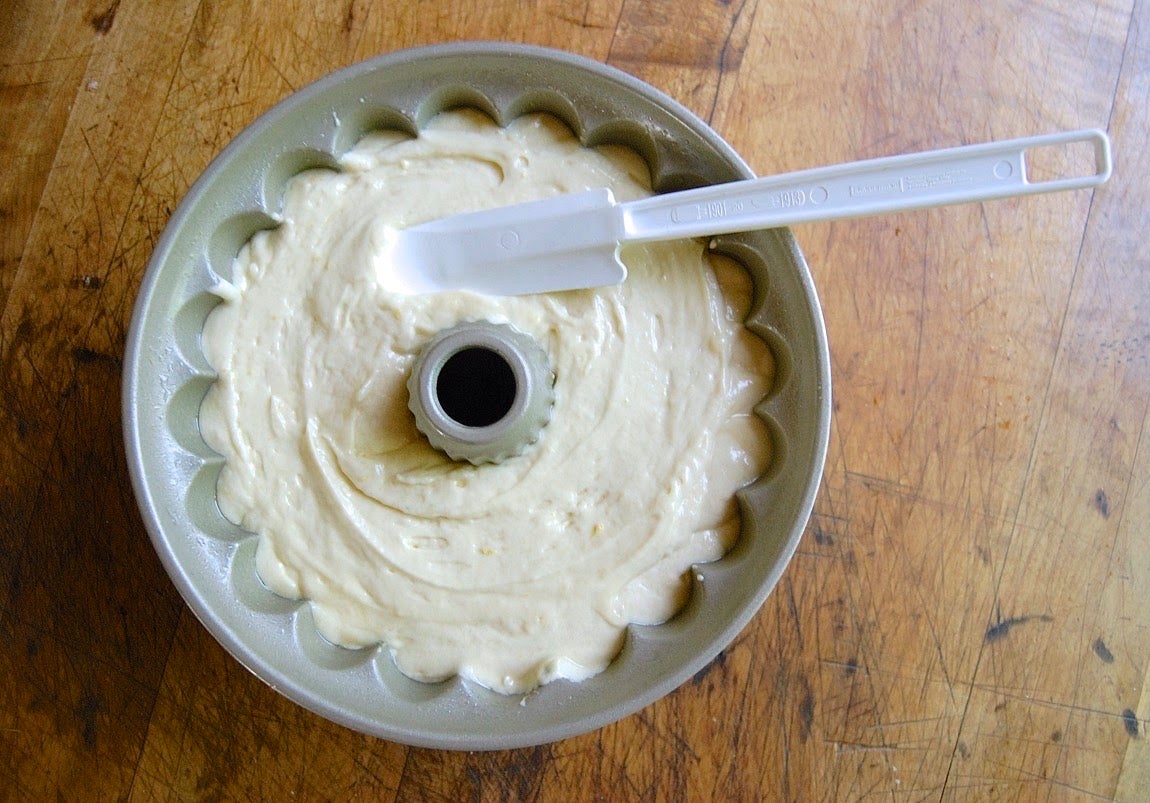
Serendipitously, a typical double-layer or 9” x 13” cake makes about 6 cups of batter; so most butter or oil cakes can be baked in a Bundt pan. For further details, see our blog post: Bundt pan size: which Bundt pan is best for a 9” x 13” cake recipe?
Notice I said butter or oil; please don’t bake a sponge cake or foam cake (e.g., angel food) in a Bundt pan. The shape of the pan isn’t suitable for this type of cake. In addition, many Bundt pans are non-stick; and angel food cakes don’t rise well in non-stick pans.
What if your Bundt pan is larger: say, 12-cup capacity? It’s fine to use; just understand the cake won’t get the entire top-to-bottom Bundt design, since it won’t rise all the way to the top of the pan.
Since Bundt cakes are thicker and deeper than layer cakes, you’ll need to bake them about 30% longer (in a 10-cup capacity pan) than you would in a 9” x 13” pan, or about 15% to 20% longer in a 12-cup pan.
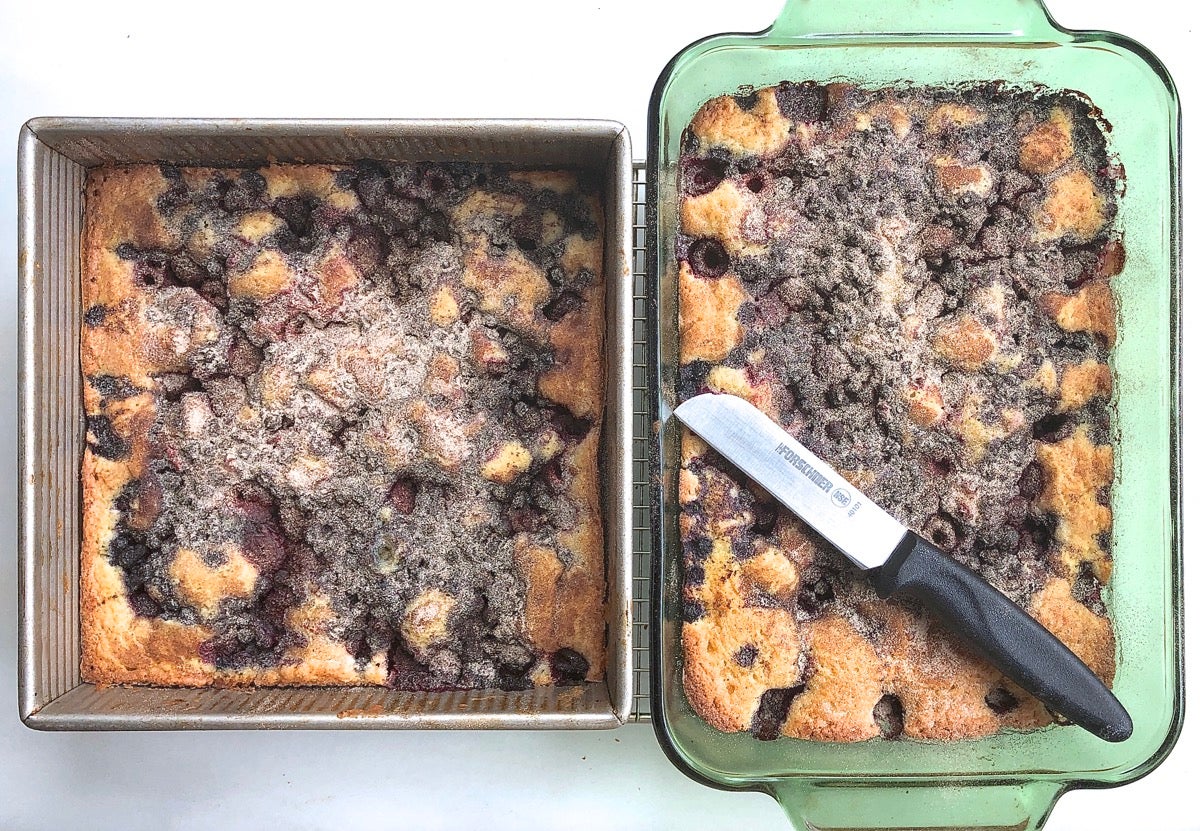
What about recipes calling for less-common pans?
As you’ve seen, a recipe directing you to use an 11” x 7” pan can easily be made in a 9” square pan.
How about a 10” x 15” jelly roll pan (150”)? If you’re baking bars, substitute one 9” square pan (81”), plus one 8” square or 9” round pan (64”) for a total area of 145”.
But if you’re making a cake, it’s probably a sponge cake that really does need to bake in that specific 10” x 15” pan, since it’s almost certainly going to be rolled up into a log. Other pan combinations (two rounds? A round and a square?) just won’t cut it.
Now, what about springform pans? The point of these pans is their extra depth (usually 3” deep); and their facility in baking cheesecakes, or multi-layered/fragile cakes. The sides of the springform open up and can be lifted away from the cake, leaving it intact and upright; no need to turn the cake upside-down onto a rack.
So what if your recipe calls for a 9” springform pan? You shouldn’t and really can’t substitute a 9” round, 8” square, or any other standard pan — it won’t be deep enough, and you’ll wreck your cake trying to get it out of the pan.
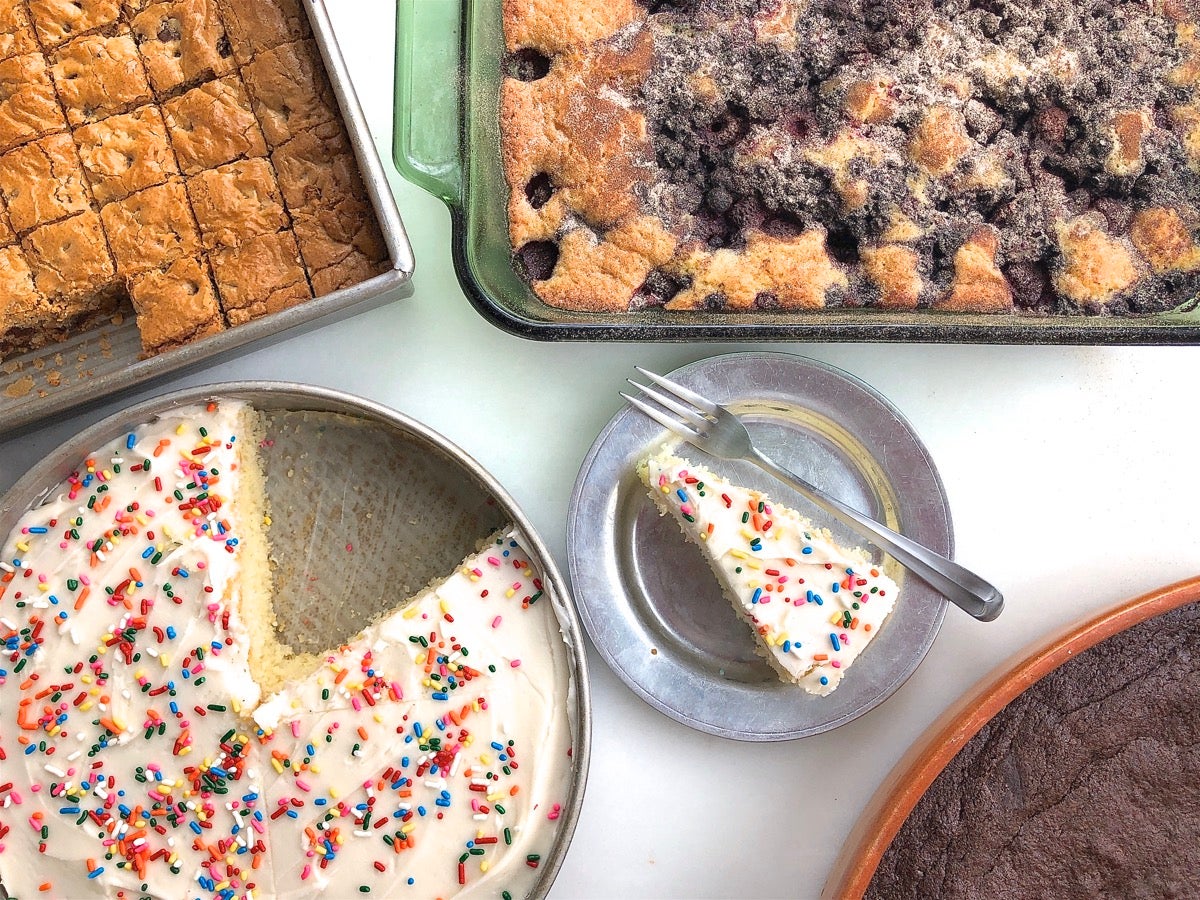
So, your old Fannie Farmer brownie recipe calls for a 7" x 7" square pan? Pull out your 8" round and go for it!
If you enjoyed this post, here are some more you might like:
How to convert cake to cupcakes
How to make muffins from a quick bread recipe
Big batch brownies and bars (increasing a 9” x 13” bar recipe to fit a half-sheet pan)